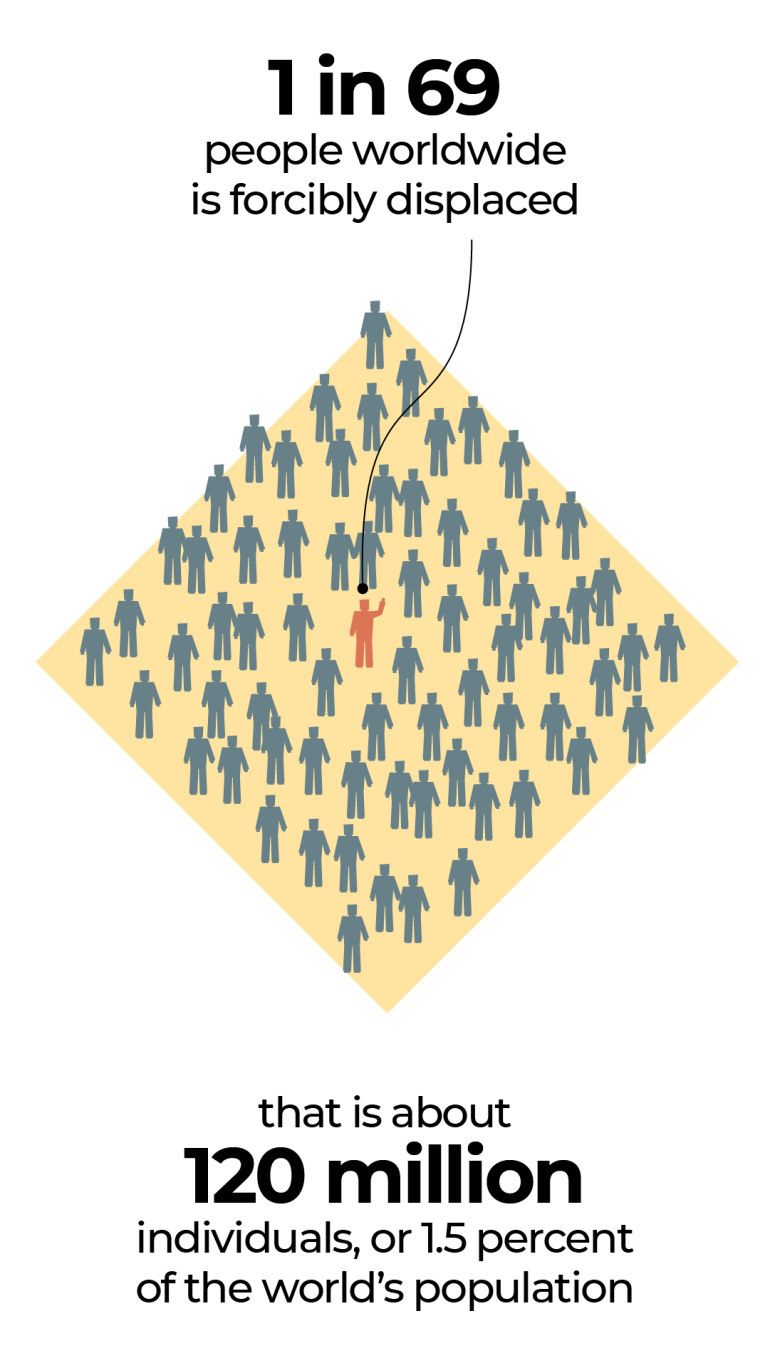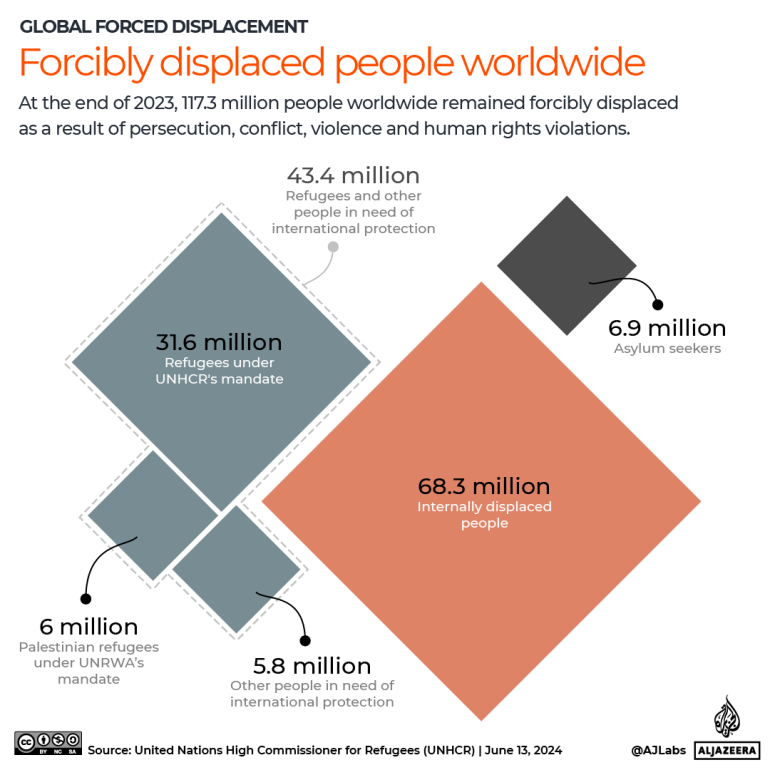The faces behind the numbers
About 120 million people, or one in 69 individuals worldwide, are displaced.
One out of every 69 people on Earth is now displaced.
That is about 120 million people, or 1.5 percent of the world's population, who have been uprooted from their homes.
Behind these numbers are countless human stories of families separated, livelihoods lost and communities shattered.

Sixty-eight million of those are internally displaced within their own countries. The rest are refugees in need of protection (43.4 million) and people who are seeking asylum (6.9 million), according to the annual displacement report by the Office of the United Nations High Commissioner for Refugees (UNHCR) .
To raise awareness about the situation of refugees worldwide, the UN designated June 20 each year as World Refugee Day.

If forcibly displaced people formed a country, it would be the 13th most populated in the world just behind Japan. About half of these forcibly displaced people are children.

Visualising 72 years of refugee journeys
In 1951, the UN established the Refugee Convention to protect the rights of refugees in Europe in the aftermath of World War II. In 1967, the convention was expanded to address displacement across the rest of the world.
When the Refugee Convention was born, there were 2.1 million refugees. By 1980, the number of refugees recorded by the UN surpassed 10 million for the first time. Wars in Afghanistan and Ethiopia during the 1980s caused the number of refugees to double to 20 million by 1990.
The number of refugees remained fairly consistent over the next two decades.
However, the United States invasion of Afghanistan in 2001 and Iraq in 2003 together with civil wars in South Sudan and Syria resulted in refugee numbers exceeding 30 million by the end of 2021.

The war in Ukraine, which started in 2022, led to one of the fastest growing refugee crises since World War II with 5.7 million people forced to flee Ukraine in less than a year. By the end of 2023, six million Ukrainians remained forcibly displaced.
Read more:
- West still welcoming Ukrainian refugees, but challenges lie ahead
- The ‘impossible’ life of Myanmar’s Rohingya refugees
- ‘In tents again’: Life comes full circle for Afghans expelled from Pakistan
In 2023, conflict in Sudan between the army and the Rapid Support Forces paramilitary increased the number of refugees to 1.5 million. Before the war, Sudan had taken in many Syrian refugees. When the war started, the number of Syrian refugees in Sudan dropped from 93,500 in 2022 to 26,600 in 2023 as many left for other countries. Thousands of people are still being displaced daily more than a year after the conflict began.
Read more:
- Starving to death is as scary as the war for Sudanese refugees in Chad
- Nowhere safe in Gaza: How Israeli attacks have pushed more than 1.5 million people into Rafah
- Birth, death, escape: Three women's struggle through Sudan's war
- Revisiting molokhia amid war and displacement in Gaza
Most recently, Israel’s bombardment of the Gaza Strip has had a devastating toll on the Palestinian population. UNRWA, the UN agency for Palestinian refugees, estimated that from October to December, up to 1.7 million people – more than 75 percent of the population - have been displaced within the Gaza Strip with many having been forced to flee multiple times.
The humanitarian situation in the Gaza Strip is extremely dire with all 2.3 million inhabitants facing food shortages and the threat of famine.
Read more:
- West still welcoming Ukrainian refugees, but challenges lie ahead
- 'Tell them what happened': Rescue on the high seas
- Forced from home, Colombians build a life in a basketball stadium
As of 2024, almost three-quarters (72 percent) of all refugees came from just five countries: Afghanistan (6.4 million), Syria (6.4 million), Venezuela (6.1 million), Ukraine (6 million) and Palestine (6 million).
Under international law, refugees are people who are forced to flee their home countries to escape persecution or a serious threat to their life, physical integrity or freedom.
Where do refugees settle?
Almost 70 percent of refugees and others in need of international protection live in countries next to their countries of origin.
Globally, the largest refugee populations are hosted by Iran (3.8 million), Turkey (3.3 million), Colombia (2.9 million), Germany (2.6 million) and Pakistan (2 million).
Nearly all refugees in Iran and Pakistan are Afghans while most refugees in Turkey are Syrians.
In the past decade, refugee numbers have increased in these major host countries except for Turkey, where numbers have dropped by 14 percent since 2021.
Germany is the only major host country that does not border the main refugee source countries. Most refugees in Germany at the end of 2023 were from Ukraine (1.1 million), Syria (705,800), Afghanistan (255,100) and Iraq (146,500).

